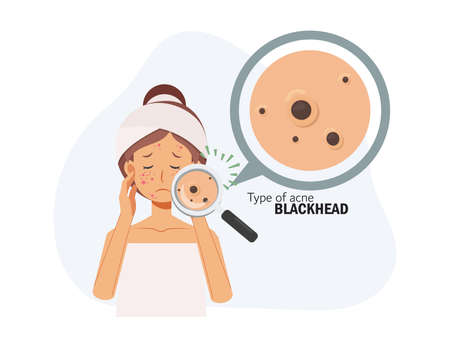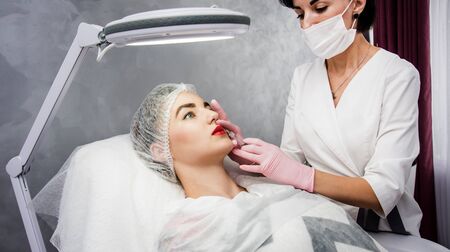Introduction: The Allure of Aesthetic Treatments
In recent years, the United Kingdom has seen a remarkable surge in the popularity of aesthetic treatments. From subtle enhancements like dermal fillers and anti-wrinkle injections to more transformative procedures such as chemical peels and laser resurfacing, these treatments are no longer reserved for celebrities or those in the public eye. Instead, they have become a talking point across dinner tables, office chats, and even casual conversations among friends. The appeal is clear: who doesnt want to feel a touch more confident or refreshed? Yet, while glossy magazines and social media influencers often showcase flawless results, there is a growing need for an honest conversation about the potential risks involved. By exploring both real-life stories and the narratives amplified by the media, this article aims to offer a balanced perspective on what you might really expect when considering aesthetic procedures in the UK.
2. Media Portrayal: Sensational Headlines and Scare Tactics
As someone who’s both observed and personally experienced the world of aesthetic treatments in the UK, I can’t help but notice how the media often shapes public perception. British news outlets frequently focus on worst-case scenarios, highlighting rare complications or botched procedures with dramatic headlines. This approach, while attention-grabbing, can create unnecessary fear and widespread misconceptions about cosmetic enhancements.
Let’s take a closer look at how these narratives are constructed. Tabloids and mainstream publications alike tend to spotlight stories that invoke shock or sympathy—think “Lip Fillers Gone Wrong” or “Botox Nightmare Leaves Woman Scarred.” The reality is that such cases represent a tiny fraction of overall experiences, yet they dominate the conversation. This pattern not only stigmatises those seeking treatments but also puts reputable practitioners under unfair scrutiny.
Media Headline |
Actual Incidence Rate |
Impact on Public Perception |
|---|---|---|
“Celebrity Disfigured by Botox Disaster” |
Less than 1% experience severe complications* | Increases fear; discourages responsible treatment-seekers |
“Filler Fiasco: What They Don’t Tell You” |
The majority of fillers are safe when administered by professionals* | Sows doubt about practitioner credibility |
“Permanent Damage from Cheap Procedures” |
Most issues stem from unqualified providers* | Overshadows positive outcomes from legitimate clinics |
*Data derived from UK NHS and British Association of Aesthetic Plastic Surgeons reports.
This sensationalism doesn’t just stop at print; morning talk shows and radio programmes often invite guests to share horror stories, rarely balancing them with tales of positive, confidence-boosting results. While it’s vital to address real risks, the overwhelming emphasis on negative outcomes does little to inform the public about how to choose safe, qualified practitioners or what typical recovery processes actually involve.

3. Real Stories: Honest Accounts from Everyday People
When it comes to aesthetic treatments, there’s nothing quite like hearing the real experiences of people who have walked this path in the UK. Forget the glossy magazine spreads and viral social posts—let’s focus on genuine stories from everyday individuals who have chosen to enhance their appearance, for better or worse.
Take Sarah, a graphic designer from Manchester. After months of considering dermal fillers to refresh her tired-looking eyes, she finally took the plunge at a reputable clinic. “The initial results were subtle and natural,” she shares, “but I did experience some swelling and bruising for nearly a week. Thankfully, my practitioner explained what to expect, so I wasn’t alarmed.” For Sarah, open communication with her provider made all the difference in managing both her expectations and her recovery.
Meanwhile, Tom, a teacher in London, decided on laser hair removal after years of feeling self-conscious about his back hair. “It worked well for me overall,” he explains, “but I did suffer a minor burn during one session which left a small scar. The clinic handled it professionally and offered free aftercare until it healed.” Tom’s story is a reminder that while complications can happen even at respected clinics, prompt support and transparency are key to a positive outcome.
Not every story is straightforwardly positive or negative. Priya, based in Birmingham, sought out microblading for her eyebrows after seeing stunning transformations online. “My brows looked amazing at first,” she says, “but after a few weeks they faded unevenly and I needed an expensive touch-up.” Her takeaway? “Do your research—some places promise quick fixes but don’t deliver lasting results.”
These accounts show that the reality of aesthetic treatments in the UK is far more nuanced than media headlines suggest. Most people experience satisfactory results with manageable side effects when they choose qualified practitioners. However, setbacks do occur—and it’s essential to share these stories openly so others can make informed decisions. In the end, honest conversations about both triumphs and challenges help demystify the process and empower everyone seeking to look and feel their best.
4. Common Risks: What Practitioners Wish You Knew
When it comes to aesthetic treatments, separating fact from fiction is vital—especially with the UK’s ever-growing appetite for injectables and other cosmetic enhancements. Many people are understandably anxious, but as practitioners across London and beyond often point out, most risks are not as dramatic as headlines suggest. To help you make an informed decision, here’s a breakdown of the most common risks associated with aesthetic procedures, drawn from real conversations with UK-based professionals.
Everyday Complications vs. Rare Events
It’s easy to focus on sensational stories, but most complications are mild and temporary. Experienced practitioners in the UK emphasise that side effects are usually manageable and part of the healing process. Here’s a comparison:
| Common Side Effects | How Long They Last | What Practitioners Advise |
|---|---|---|
| Bruising & Swelling | Up to 1 week | Use cold compresses; avoid blood thinners before treatment |
| Redness & Tenderness | A few hours to 2 days | Keep area clean; avoid heavy exercise for 24 hours |
| Mild Asymmetry or Lumps (Fillers) | Usually resolves in 1–2 weeks | Massage gently if advised; follow-up if persistent |
| Allergic Reactions (rare) | Immediate to a few days | Contact practitioner straight away; seek medical attention if severe |
The Importance of Aftercare & Communication
UK practitioners stress that good aftercare makes all the difference. The British approach is thorough—patients are encouraged to ask questions and report anything unusual, no matter how minor it seems. Proper aftercare instructions, such as avoiding saunas, alcohol, or strenuous activity immediately after treatment, help minimise risks and ensure better outcomes.
The Value of a Reputable Practitioner
If there’s one thing nearly every expert agrees on, it’s this: choosing a qualified practitioner is your best safeguard against complications. In the UK, reputable clinics are registered with the Care Quality Commission or similar bodies. Don’t be shy about asking for credentials or before-and-after photos during your consultation—it’s standard practice here.
A Final Word on Media Hype
Ultimately, while complications do happen, they’re far less common than the tabloids would have you believe. Most risks can be managed with open communication and by following professional advice—so you can feel empowered rather than overwhelmed when making choices about aesthetic treatments.
5. Navigating Safety: Informed Choices and British Standards
When it comes to aesthetic treatments in the UK, navigating safety is all about making informed choices and understanding our uniquely British approach to regulation. With glossy magazine spreads and social media influencers often spotlighting the trendiest clinics or “miracle” procedures, it’s easy to get swept up in the excitement. However, real peace of mind comes from knowing you’re putting your wellbeing first by choosing reputable practitioners who meet the highest standards.
How to Spot a Reputable Clinic
Start with research—don’t be shy about digging into a clinic’s credentials. In Britain, reputable providers should be registered with regulatory bodies such as the Care Quality Commission (CQC) for clinics offering certain medical treatments, or the General Medical Council (GMC) for doctors. Look for practitioners with clear qualifications displayed both online and within their premises. Don’t hesitate to ask questions about their experience and ongoing training; a truly professional team will always welcome your curiosity.
Understanding UK Regulations
The UK has some of the most rigorous standards in Europe when it comes to aesthetic medicine. While non-surgical treatments like fillers are currently under review for tighter regulation, clinics that prioritise patient safety already adhere to strict protocols. Ask whether your practitioner is insured and follows guidelines set by organisations like Save Face or the British Association of Aesthetic Plastic Surgeons (BAAPS). Always ensure you’re given a thorough consultation, including discussion of risks, alternatives, and aftercare.
Prioritising Safety Over Trends
It’s tempting to chase after the latest beauty trend, but safety must always come first. Resist pressure from flashy adverts or “too good to be true” deals; high-quality treatment in a regulated environment may cost more, but it’s an investment in your wellbeing. Remember, genuine professionals will never rush your decision or promise impossible results—they’ll help you weigh up options thoughtfully, reflecting that quintessentially British sense of measured consideration. By arming yourself with knowledge and insisting on proper standards, you can enjoy aesthetic treatments with confidence—well beyond the media hype.
6. Conclusion: Separating Fact from Fiction
In a world where sensational headlines and viral social media stories can easily cloud our judgement, it’s more important than ever to approach aesthetic treatments with both curiosity and caution. Real-life experiences, especially those of people you trust or professionals within the UK’s regulated industry, should be weighed far more heavily than clickbait horror stories. The British approach to beauty has always been about subtlety, self-expression, and personal well-being—values that are often overlooked in exaggerated reports. By taking the time to research reputable clinics, consult qualified practitioners, and reflect honestly on your own motivations, you’ll put yourself in the best position to make decisions that feel right for you. Remember: beauty treatments aren’t magic solutions, but thoughtful enhancements that work best when grounded in realism and care. Let’s move beyond the hype, respect our unique journeys, and choose paths that genuinely support our confidence and health.

